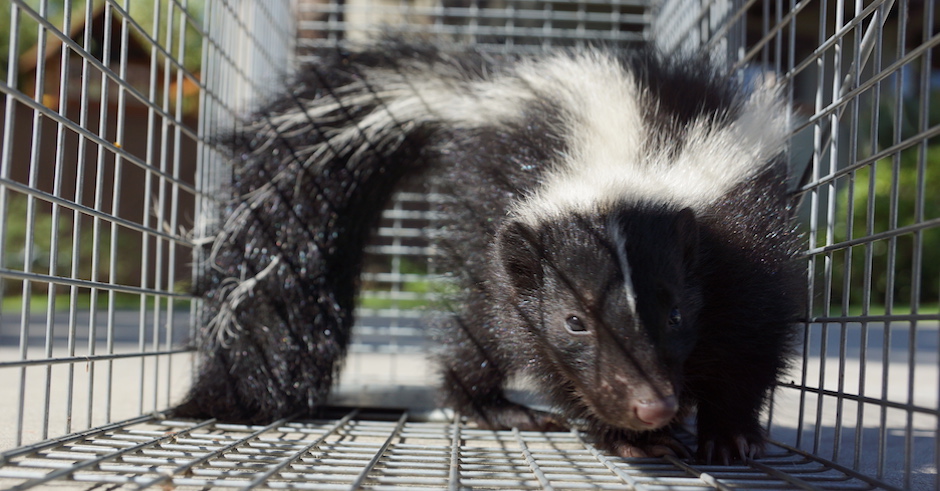Skunks 101: Their Appearance, Biology, Life Cycle, Habitat, Diet, Behavior
Skunks are quite likely one of the most well-known animals around the world. They are famous for their anal scent glands which emits a terribly pungent aroma. The odor is bad enough to turn away predators like bears and lions in the wild. Skunks can spray this terrible smelling liquid with incredible accuracy. It is their best defense.
Most skunks are black with a thick, white stripe down their back. However, depending on the breed and species they may be other colors, such as brown, gray or cream colored. A skunk’s front paws are adorned with long, sharp claws.
They range in size from fifteen inches to over thirty-five inches long and have muscular legs. Depending on the species, a skunk may weigh between a single pound and eighteen pounds. 
Behavior and Life Cycle
Skunks can be found around the globe. They thrive in both urban and suburban areas but can also be found in the wild. These animals typically live a little over a year in the wild but can survive up to ten years in captivity.
Skunks are solitary animals that keep to themselves. They get together with other skunks only to mate and to keep warm in extreme cold. They can often be found huddling together in dens to preserve body heat.
Skunks aren’t really nocturnal, but they often hunt at night. They have very poor vision, but a keen sense of smell and acute hearing make up for their lack of vision.
Diet and Reproduction
Skunks usually only reproduce in the spring. A female will mate several times with different males to ensure pregnancy. The gestation period ranges from sixty to seventy days before she births four to seven young in a litter.
Baby skunks are weened at about two weeks of age but stay with their mother until they are ready to mate. The young open their eyes at about three weeks of age.
Skunks are omnivores who will eat almost anything. Their diet ranges with the seasons and available food sources. They are not above rooting through trash to find food in urban settings.
In the spring a skunk will eat more fruits, berries and insects. They will also eat small rodents, frogs and grass. Two of the skunk’s favorite food sources are eggs and bees. Skunks are one of bees only natural predators. Their thick fur protects them from bee stings as they feed on the bees who try to protect their hive.
Skunks use their front paws to dig dens or burrows to live in. While they don’t truly hibernate, they can go dormant to survive extreme cold.
Visit our Wildlife Trapper Smyrna home page to learn more about us.

